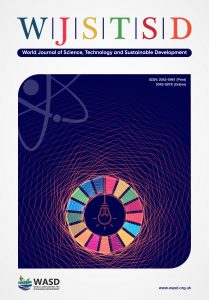Reusability analytics tool for end-of-life assessment of building materials in a circular economy, Lukman Akanbi, Lukumon Oyedele, Juan Delgado, Muhammad Bilal, Olugbenga Akinade, Anuoluwapo Ajayi and Naimah Mohammed-Yakub
 Lukman Akanbi
Lukman Akanbi
Big Data Analytics Laboratory (BDAL)
University of the West of England, Bristol
UK
Department of Computer Science and Engineering
Obafemi Awolowo University, Ile-Ife
Nigeria
Email: lukman.akanbi@uwe.ac.uk
Prof. Lukumon Oyedele, Juan Manuel Davila Delgado, Muhammad Bilal, Olugbenga Akinade, Anuoluwapo Ajayi
Big Data Analytics Laboratory (BDAL)
University of the West of England, Bristol
UK
Naimah Mohammed-Yakub
Department of Architecture
Federal University of Technology, Akure
Nigeria
DOI: 10.1108/WJSTSD-05-2018-0041
Purpose: In a circular economy, the goal is to keep materials values in the economy for as long as possible. For the construction industry to support the goal of the circular economy, there is the need for materials reuse. However, there is little or no information about the amount and quality of reusable materials obtainable when buildings are deconstructed. The purpose of this paper, therefore, is to develop a reusability analytics tool for assessing end-of-life status of building materials.
Design/methodology/approach: A review of the extant literature was carried out to identify the best approach to modelling end-of-life reusability assessment tool. The reliability analysis principle and materials properties were used to develop the predictive mathematical model for assessing building materials performance. The model was tested using the case study of a building design and materials take-off quantities as specified in the bill of quantity of the building design.
Findings: The results of analytics show that the quality of the building materials varies with the building component. For example, from the case study, at the 80th year of the building, the qualities of the obtainable concrete from the building are 0.9865, 0.9835, 0.9728 and 0.9799, respectively, from the foundation, first floor, frame and stair components of the building.
Originality/value: As a contribution to the concept of circular economy in the built environment, the tool provides a foundation for estimating the quality of obtainable building materials at the end-of-life based on the life expectancy of the building materials.
Keywords: End-of-life; Demolition.
Citation: Akanbi, L., Oyedele, L., Davila Delgado, J.M., Bilal, M., Akinade, O., Ajayi, A. and Mohammed-Yakub, N. (2019), "Reusability analytics tool for end-of-life assessment of building materials in a circular economy", World Journal of Science, Technology and Sustainable Development, Vol. 16 No. 1, pp. 40-55. https://doi.org/10.1108/WJSTSD-05-2018-0041

